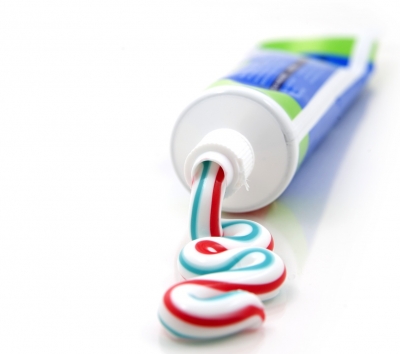
People who cleaned their teeth in the 1840s probably used one of various brands of toothpowder which contained ground-up coral, cuttlefish bone, burnt eggshells or porcelain. The powder might have been coloured purple with cochineal, derived from the bodies of tropical scale insects.
Today’s toothpastes – white, coloured or striped – contain ten or more ingredients. Some play a part in cleaning or protecting the teeth; some make the paste tastier; some bind the paste together; other help it a flow out of the tube.
The main ingredient in the white part of toothpaste is finely powdered chalk (calcium carbonate), or another mineral powder such as aluminium oxide, which is an slightly abrasive and help to remove the dulling film which is deposited by food and drink and contains decay-causing plaque.
Some titanium oxide, a white powder, is sometimes also added to whiten the toothpaste.
Clear gel toothpastes get their abrasive quality from transplant compounds of silica, often with a colouring added.
The cleaning and polishing ingredients are combined with water into a thick paste by the addition of a binding and thickening agent such as alginate, which is derived from seaweed.
A trace of detergent is added to create foam and help the cleaning process. to make the paste palatable, it is usually sweetened with peppermint oil and menthol.
A moisturizer such as glycerin is also added to prevent the paste from drying out. In addition most toothpastes now contain fluoride which helps to strengthen tooth enamel. Disinfectant such as formalin may also be included to kill bacteria.
Picture Credit : Google




